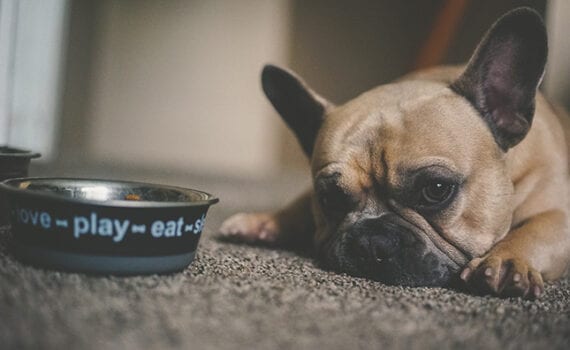
Transitioning Your Dog or Cat to a Raw Diet
By Carol Kendig
What Do Cats and Dogs Naturally Eat?
Our dogs and cats are both carnivores, but while cats are true carnivores, dogs are often referred to as scavenging-carnivores. The main difference is simply that cats need no additional nutrition other than their prey animals provide, but dogs can tolerate eating limited amounts of produce and grain.
We all want healthy pets full of vitality, so as responsible pet owners one of our goals is to provide our pets with diets suited to their digestion. Commercial raw, complete, and balanced diets are formulated to meet your pet’s nutritional needs and be easily digestible.
Making the Transition: Dogs
Young, Healthy Dogs
First let’s talk about transitioning a young, healthy dog to a raw diet. Switching puppies and young dogs off a kibble/canned food diet to a raw diet will be relatively easy. Evaluate your dog’s health at each stage and slow down if vomiting, diarrhea, or decreased appetite occurs, however that will be very rare. Here’s what a typical transition schedule for young, healthy dogs would look like:
Puppy or young dog eating a chicken kibble/canned food diet:
Days 1 – 4 replace ¼ of current food with raw
Days 5 – 8 replace ½ of current food with raw
Days 9 -12 replace ¾ of current food with raw
Approximately at 2 weeks your pet will be on a raw diet!
For the first few weeks transition you could use Chicken then move to chicken/salmon then continue rotating different proteins throughout the dog’s life.
Older or Unwell Dogs
Transitioning older or unwell dogs to a raw diet may be more complicated. Sometimes dogs who have eaten kibble for many years can be resistant to change, but normally they love it. After years of eating inappropriate foods their digestive systems would do well with a slower transition to raw diets. Perhaps a week or two at each increment, always checking for any negative symptoms.
Dogs with current health conditions are in a category by themselves. Different diseases need to be evaluated by a veterinarian before diet changes are adopted. The best person to advise you would be a holistic veterinarian as they have the diet and nutritional background that conventional vets do not have.
In general, dogs are reasonably easy to switch onto a raw diet. Since they have evolved as scavengers, most enjoy a variety of different meats in varied forms such as raw and freeze-dried. But now we come to cats and things dramatically change.
Making the Transition: Cats
Imprint Eaters
Cats are imprint eaters. This means that they imprint on foods, shapes, and textures they eat as kittens and, as adults, don’t recognize new foods, shapes or textures as edible; so, unless you have a very young cat a raw food transition can be difficult for this species. Older, kibble/canned fed cats are able to switch, but it will require patience.
How Long Does It Take?
Knowing that the best diet for her cat was raw food, one woman admitted it took her almost a year to “trick” her cat into eating raw food. She literally had to replace one tiny kibble at a time with a morsel of raw food in her cat’s bowl. It was an exasperating year for them both with the cat sometimes eating more raw food and sometimes eating less. But it was worth it to the owner, knowing her cat was gradually transitioning onto a species appropriate diet. In the end, she was successful, and her cat is a sleek, healthy feline eating a correct raw diet. Weigh that story against the gentleman who had a four-year-old kibble-fed Bengal. The owner decided to try a raw diet, his cat devoured it on the first feeding and now will only eat raw food. Moral of the stories: transitional feeding with cats can take from 1 feeding to 1 year.
Different Textures: Frozen Raw Versus Freeze-Dried
When attempting a transitional feeding with cats, please remember another factor may be frozen raw versus freeze-dried raw food. Some cats enjoy the wet raw and will not touch the freeze-dried version while others prefer the moisture less texture of freeze-dried (always have water available nearby if not adding to freeze-dried food). Only experimentation with your cat will give you an answer.
Is Transitioning My Pet to Raw Food Worth It?
At this point you may be wondering if transitioning to a raw diet is worth the effort. The answer to that is a resounding YES! Normally, transitions go smoothly, and pets thrive on their new healthy raw diet. Not only will the biologically correct diet benefit your pet’s health and add healthy years to their lives, but you will feel a surge of satisfaction knowing you are doing the right thing for the animals who love and rely on you to take care of them.